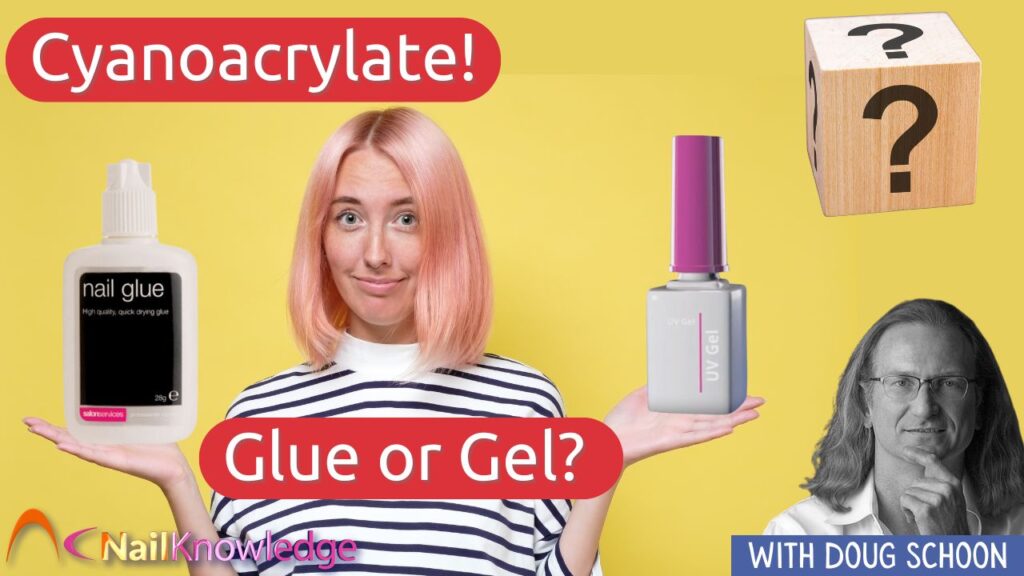Terminology can often become a point of confusion among professionals and clients alike. A common query we encounter pertains to the use of the term “gel” in relation to products containing cyanoacrylate. A compound traditionally recognized as a type of glue. This issue underscores a broader challenge in the industry: understanding the distinctions and overlaps between different product categories.
This article aims to clarify these nuances, exploring how one ingredient can indeed fit into multiple product definitions, and why precise language is crucial in the beauty industry to enhance professionalism and reduce misunderstandings.
Versatile Uses of Cyanoacrylates in the Beauty Industry
Cyanoacrylates are monomers from the acrylic family that are used for many purposes in the beauty industry. For instance, they are used as tip adhesives for nails, used to adhere rhinestones and other accessories to nails, they’re also used to create fiberglass and silk wraps, and they are regularly used as eyelash adhesives. They are also sold as “no-light nail gels” and for so-called “dip” systems.
In all cases, they are considered adhesives, since they stick to the nail plate and more commonly they are called “glue”. Cyanoacrylates can be thin and watery or thickened to a gel-like consistency. Some mistake the term “gel” to mean only UV-curing gels. UV curing gels are called “gels” because of their gel-like consistency. In other words, not all gels are UV-curing. The word “gel” describes the consistency of the product, not its chemistry or composition.
Hair gels for instance are thickened to a high viscosity, which is why they’re called gels. Therefore, it is entirely proper to refer to a thickened cyanoacrylate as a gel. Nail professionals should understand that not all gels are UV curing gels. That’s why when referring to UV gels, they should not just be called “gels”- which is an overly simplistic name.
The Importance of Precise Terminology in Professional Nail Care
This is a great example of why it is important to use more descriptive terms when talking about nail products, if for no other reason, to reduce confusion.
Another example of this are the sophisticated, high tech monomer blends used to create artificial nail products. These products are among the most scientifically advanced products in the beauty industry, yet nail professionals refer to them as “liquid”. The polymer powders are equally sophisticated and complex, yet they are simply called “powders”.
If nail techs want clients to recognize them as professionals, they would be wise to use more professional terms, such as UV gel, monomers and polymers.


